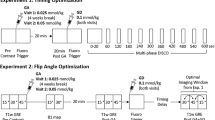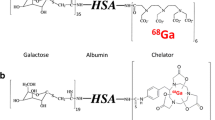Abstract
Purpose: The aim of this study was to identify the route of administration of 5-FU with the greatest pharmacological advantage in a rat model using noninvasive in vivo 19F nuclear magnetic resonance (NMR) spectroscopy. Methods: 5-FU (50 mg/kg) was administered to anesthetized Wistar rats cannulated into the hepatic artery, portal vein or tail vein and 11 NMR spectra were acquired from the liver region to 60.5 min every 5.5 min. Results: With systemic i.v. (tail vein) infusion, the 19F-NMR signal for 5-FU from the liver region peaked in the first spectrum (0–5.5 min), and then gradually decreased. The signal for the 5-FU catabolite α-fluoro-β-alanine (FBAL) gradually increased to the sixth spectrum (0–33.0 min) and then plateaued. Following portal vein infusion the intensity of the first 5-FU spectrum was twice as high as that following i.v. infusion, but the intensity decreased and the FBAL signal increased gradually in the sixth spectrum as systemic i.v. infusion. In contrast, the intensity of the 5-FU signal following hepatic artery infusion was the same as that following portal vein infusion in the first spectrum, and maintained a strong intensity to the final spectrum (60.5 min). The FBAL signal was detected from the second spectrum following hepatic artery infusion, but its intensity was significantly weaker than that following i.v. or portal vein infusion. Conclusions: Hepatic arterial infusion resulted in the active form of 5-FU being present for a longer time and its degradation in the liver being suppressed compared with the results following portal vein infusion. This catabolic advantage of hepatic areterial infusion could lead to a more potent anti-tumor activity against liver metastases, but could also lead to significant host toxicity including biliary toxicity. We recommend that the dose/schedule of 5-FU administered via the hepatic artery should be adjusted carefully.
Similar content being viewed by others
Author information
Authors and Affiliations
Additional information
Received: 4 August 1997 / Accepted: 16 January 1998
Rights and permissions
About this article
Cite this article
Okuno, K., Hirai, N., Lee, Y. et al. Superiority of hepatic arterial infusion in preventing catabolism of 5-FU compared with portal vein infusion revealed by an in vivo 19F NMR study. Cancer Chemother Pharmacol 42, 341–344 (1998). https://doi.org/10.1007/s002800050827
Issue Date:
DOI: https://doi.org/10.1007/s002800050827




